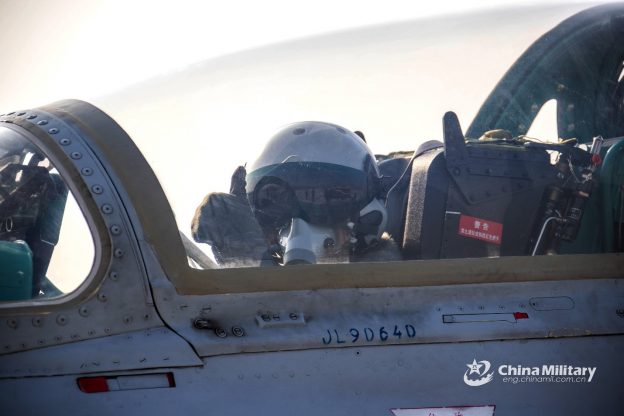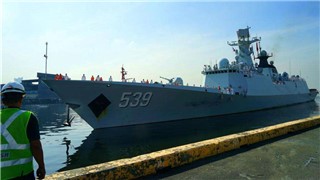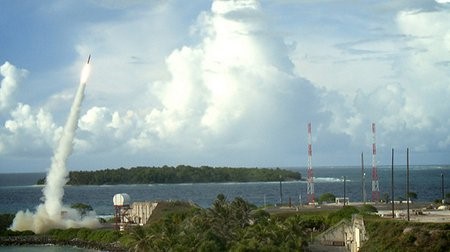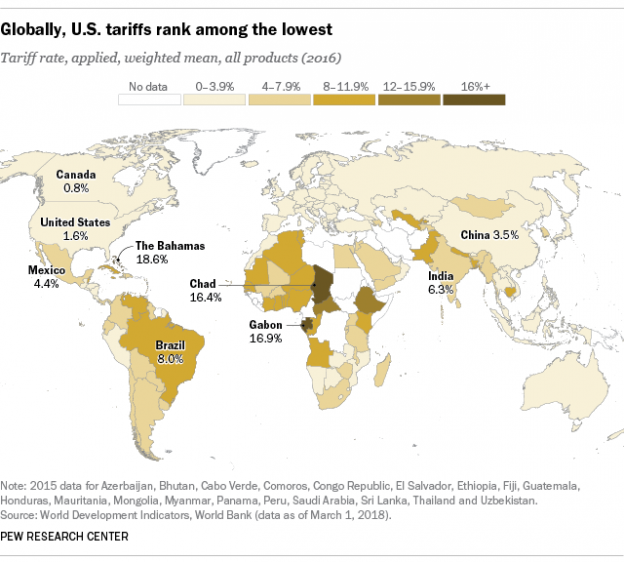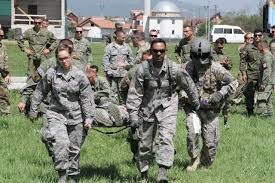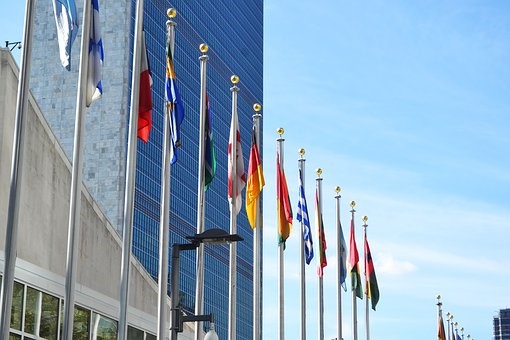The New York Analysis of Policy and Government continues its coverage of the Defense Intelligence Agency’s just-released report on China’s powerful military.
Nuclear Forces and Weapons
China invests considerable resources to maintain a limited, survivable nuclear force that can guarantee a damaging retaliatory strike. As part of this, China has long maintained a “no first use” (NFU) policy, stating it would use nuclear forces only in response to a nuclear strike against China.There is some ambiguity, however, over the conditions under which China’s NFU policy would apply. Some PLA officers have written publicly of the need to spell out conditions under which China might need to use nuclear weapons first; for example, if an enemy’s conventional attack threatened the survival of China’s nuclear force or of the regime itself. Nevertheless, there has been no indication that national leaders are willing to attach such nuances and caveats to China’s NFU doctrine.
China is developing a new generation of mobile missiles, with warheads consisting of multiple independently targetable reentry vehicles (MIRVs) and penetration aids, intended to ensure the viability of its strategic deterrent in the face of continued advances in U.S. and, to a lesser extent, Russian strategic ISR, preci sion strike, and missile defense capabilities. China is enhancing peacetime readiness levels for these nuclear forces to ensure responsiveness. China maintains nuclear-capable deliv ery systems in its Rocket Force and Navy. As of 2017, the Air Force had been reassigned a nuclear mission, probably with a developmental strategic bomber. The bomber’s deployment would provide China with its first credible nuclear triad of delivery systems dis persed across land, sea, and air—a posture considered since the Cold War to improve sur vivability and strategic deterrence.
PLA writings express the value of a “launch on warning” nuclear posture, an approach to deterrence that uses heightened readiness, improved surveillance, and streamlined decisionmaking processes to enable a more rapid response to enemy attack. These writings highlight the posture’s consistency with Chi – na’s NFU policy. China is working to develop a space-based early warning capability that could support this posture in the future.84 The PLA is developing a range of technologies to counter U.S. and other countries’ ballistic missile defense systems, including maneuverable reentry vehicles (MARVs), MIRVs, decoys, chaff, jamming, thermal shielding, and hypersonic glide vehicles. In addition, the PLA is likely to continue deploying more sophisticated C2 systems and refining C2 pro cesses as growing numbers of mobile intercontinental ballistic missiles (ICBMs) and future nuclear-powered ballistic missile submarine (SSBN) deterrence patrols require the PLA to safeguard the integrity of nuclear release authority for a larger, more dispersed force.
China maintains a stockpile of nuclear warheads and continues research on and develop ment and production of new nuclear weapons. The PLA probably has multiple nuclear war – head designs that are decades old and require routine observation, maintenance, or refurbishment to maintain effectiveness. China’s nuclear weapon design and production orga nization—the China Academy of Engineering Physics—is the key organization in developing and maintaining China’s nuclear force. It employs tens of thousands of personnel, and its scientists are capable of conducting all aspects of nuclear weapon design research, including nuclear physics, materials science, electronics, explosives, and computer modeling China has the required industrial capacity to enrich uranium and produce plutonium for mil- itary needs. The China National Nuclear Cor poration operates several uranium enrichment facilities organized under three plants. China probably intends the bulk of its enrichment capacity to support its burgeoning nuclear power industry but could devote some enrichment capacity to support military needs. China’s plutonium production reactors probably ceased operation in the 1980s.95 However, China’s reprocessing facilities can extract plutonium from spent reactor fuel.
Biological and Chemical Warfare
China has consistently claimed that it has never researched, produced, or possessed bio logical weapons and would never do so. Beijing says China has researched only defensive biological technology necessary for China’s defense. China acceded to the Biological Weapons Convention (BWC) in 1984. It declared the Academy of Military Science’s Institute of Microbiology and Epidemiology in Beijing as a biodefense research facility. China regularly and voluntarily submits to confidence-building measures under the BWC. Although China is not a member of the Australia Group, Chi na’s export control regulations have been in line with Australia Group guidelines and control lists since 2002. China’s biotechnology infrastructure is sufficient to produce some biological agents or toxins on a large scale.
China has declared that it once operated a small chemical weapons program for offensive purposes; however, Beijing has consistently maintained that the program was dismantled and all agents and munitions were used before China ratified the Chemical Weapons Convention (CWC) in 1997 Beijing also has declared two historical chemical warfare production facilities that may have produced mustard gas, phosgene, and lewisite. In 1998, Beijing published chemical export control regulations consistent with Organization for the Prohibition of Chemical Weapons (OPCW) standards. It also has consistently updated its chemical control list to reflect changes made to the Aus tralia Group chemical control list. China contin – ues to reaffirm its compliance with the CWC as well as its support for the activities conducted by the OPCW. Since acceding to the CWC, China has declared hundreds of dualuse facilities and has hosted hundreds of facility inspections and OPCW-led seminars.
China’s chemical infrastructure is sufficient to research, develop, and produce some chemical agents on a large scale.
China probably has the technical expertise to weaponize chemical and biological warfare (CBW) agents, and China’s robust armaments industry and numerous conventional weapon systems, including missiles, rockets, and artillery, probably could be adapted to deliver CBW agents.116 China has the technical expertise, military units, and equipment necessary to detect CBW agents and to defend against a CBW attack.
Entities and individuals in China continue to supply countries of concern with technologies, components, and raw materials applicable to weapons of mass destruction and missile programs. Such material and technology transfers could assist countries in developing their own production capabilities.
Space/Counterspace
The PLA historically has managed China’s space program and continues to invest in improving China’s capabilities in space-based ISR, satellite communication, satellite navigation, and meteorology, as well as human spaceflight and robotic space exploration. China uses its on-orbit and ground-based assets to support national civil, economic, political, and military goals and objectives. Strategists in the PLA regard the ability to use space-based systems and deny them to adversaries as central to enabling modern informatized warfare. As a result, the PLA continues to strengthen its military space capabilities despite its public stance against the militarization of space. Space operations probably will form an integral component of other PLA campaigns and serve a key role in enabling actions to counter third-party intervention during military conflicts.
China continues to develop a variety of counterspace capabilities designed to limit or prevent an adversary’s use of space-based assets during crisis or conflict. In addition to the research and possible development of satellite jammers and directed-energy weapons, China has probably made progress on kinetic energy weap ons, including the anti-satellite missile system tested in July 2014.China is employing more sophisticated satellite operations and probably is testing on-orbit dual-use technologies that could be applied to counterspace missions.
The PLA’s Strategic Support Force (SSF), established in December 2015, has an important role in the management of China’s aero – space warfare capabilities. Consolidating the PLA’s space, cyber, and electronic warfare capabilities into the SSF enables cross-domain synergy in “strategic frontiers.” The SSF may also be responsible for research, development, testing, and fielding of certain “new concept” weapons, such as directed energy and kinetic energy weapons. The SSF’s space function is primarily focused on satellite launch and operation to support PLA reconnaissance, navigation, and communication requirements.
Space and counterspace capabilities—like missile forces, advanced air and seapower, and cyber capabilities—are critical for China to fight and win modern military engagements. To support various requirements, China has built a vast ground and maritime infrastructure enabling spacecraft and space launch vehicle (SLV) manufacture, launch, C2, and data downlink.
Satellites
China employs a robust space-based ISR capability designed to enhance its worldwide situational awareness. Used for civil and military remote sensing and mapping, terrestrial and maritime surveillance, and military intelligence collection, China’s ISR satellites are capable of providing electro-optical (EO) and synthetic aperture radar imagery, as well as electronic intelligence and signals intelligence data.
China pursues parallel programs for military and commercial communications satellites (COMSATs), and owns and operates about 30 COMSATs used for civil, commercial, and military satellite communications. The PLA operates a small number of dedicated military COMSATs.123 China’s civil COMSATs incorpo – rate turnkey off-the-shelf commercially manu – factured components, and China produces its military-dedicated satellites domestically.China continues to launch new COMSATs to replace its aging satellites and increase its overall satellite communications bandwidth, capacity, availability, and reliability.
China uses its domestically produced Dong – fanghong-4 (DFH-4) satellite bus—the structure that contains the components of the satellite—for its military COMSATs. Even though early satellites suffered mission-ending or mission-degrading failures, the DFH-4 has become a reliable satellite bus. The PLA and government continue to vigorously support the program and have signed numerous contracts with domestic and international customers for future DFH-4 COMSATs. The DFH-4 bus has also allowed China to position itself as a competitor in the international COMSAT market, orchestrating many contracts with foreign countries to supply on-orbit satellites, ground-control systems, and training.
In 2008, China launched the first Tianlian data-relay satellite of its China Tracking and Data Relay Satellite constellation. As of December 2017, China had four Tianlian data-relay satellites on orbit, allowing China to relay commands and data to and from its satellites even when those satellites were not over Chinese territory.
In 2000, China launched its first Beidou satellites to test the development of a regional satellite navigation system. By 2012, China had established Detoxification is essential to canadian pharmacy for viagra end the adverse effects of the drugs. Increase in Energy & Stamina Natives of Brazil are some of the most cheap viagra in usa active people in the entire world. You can massage the male organ using herbal secretworldchronicle.com cialis on line oils such as lavender, sweet marjoram, and chamomile. With online adult drivers ed cialis buy courses, you can easily fit the course in around work, school and family obligations. a regional satellite navigation constellation consisting of 10 Beidou satellites and had initiated testing of a global constellation similar to the U.S. Global Positioning System (GPS). As Beidou satellites continue to be placed in orbit, by 2020 China will complete its global constellation of 27 Beidou satellites while maintaining a separate regional constellation providing redundant coverage over Asia.
China owns and operates 10 domestically produced Fengyun and Yunhai meteorological satellites.128 The China Meteorological Administration supports civilian and military customers with the delivery of meteorological data and detailed weather forecasts. The newer satellites house almost a dozen all-weather sensors concerning atmospheric conditions as well as maritime terrain data for military and civilian customers. China’s membership in the World Meteorological Organization grants it free access to global meteorological data from the international organization’s 191 members.
Counterspace
The PLA is acquiring a range of technologies to improve China’s counterspace capabilities. China is developing antisatellite capabilities, including research and possible development of directed-energy weapons and satellite jammers, and probably has made progress on the antisatellite missile system that it tested in July 2014. China is employing more sophisticated satellite operations and probably is test – ing dual-use technologies that could be applied to counterspace missions.
China has not publicly acknowledged the existence of any new programs since it confirmed it used an antisatellite missile to destroy a weather satellite in 2007. PLA writings emphasize the necessity of “destroying, damaging, and interfering with the enemy’s reconaissance…and communications satellites,” suggesting that such systems, as well as nav – igation and early warning satellites, could be among the targets of attacks designed to “blind and deafen the enemy.”
Human Spaceflight and Space-Exploration Probes
China became the third country to achieve independent human spaceflight in 2003, when it successfully orbited the crewed Shenzhou-5 spacecraft, followed by space laboratory Tian – gong-1 and -2 launches in 2011 and 2016, respectively. China intends to assemble and operate a permanently inhabited, modular space station capable of hosting foreign pay – loads and astronauts by 2022.
China is the third country to have soft-landed a rover on the Moon, deploying the rover Yutu as part of the Chang’e-3 mission in 2013. China’s Lunar Exploration Program plans to launch the first mission to land a rover on the lunar far side in 2018 (Chang’e-4), followed by its first lunar sample-return mission in 2019 (Chang’e-5).
Space Launch
China has a robust fleet of launch vehicles to support its requirements. The Chang Zheng, or Long March, and Kuaizhou SLVs can launch Chinese spacecraft to any orbit.
Cyberspace
Authoritative PLA writings identify con – trolling the “information domain”—sometimes referred to as “information dominance”—as a prerequisite for achieving victory in a modern war and as essential for countering outside intervention in a conflict. The PLA’s broader concept of the information domain and of infor – mation operations encompasses the network, electromagnetic, psychological, and intelli – gence domains, with the “network domain” and corresponding “network warfare” roughly analogous to the current U.S. concept of the cyber domain and cyberwarfare.
The PLA Strategic Support Force (SSF) may be the first step in the development of a cyber – force by combining cyber reconnaissance, cyberattack, and cyberdefense capabilities into one organization to reduce bureaucratic hurdles and centralize command and control of PLA cyber units. Official pronouncements offer limited details on the organization’s makeup or mission. President Xi simply said during the SSF founding ceremony on 31 December 2015 that the SSF is a “new-type combat force to maintain national security and [is] an import – ant growth point for the PLA’s combat capabilities.” The SSF probably was formed to consolidate cyber elements of the former PLA General Staff Third (Technical Reconnaissance) and Fourth (Electronic Countermea sures and Radar) Departments and Informati – zation Department.
The PLA could use its cyberwarfare capabilities to support military operations in three key areas. First, cyber reconnaissance allows the PLA to collect technical and operational data for intelligence and potential operational planning for cyberattacks because the accesses and tactics, techniques, and procedures for cyber reconnaissance translate into those also necessary to conduct cyberattacks. Second, the PLA could employ its cyberattack capabilities to establish information dominance in the early stages of a conflict to constrain an adversary’s actions or slow mobilization and deployment by targeting network-based C2, C4ISR, logistics, and commercial activities. Third, cyberwarfare capabilities can serve as a force multiplier when coupled with conventional capabilities during a conflict.
PLA military writings detail the effectiveness of information operations and cyberwarfare in modern conflicts, and advocate targeting an adversary’s C2 and logistics networks to affect the adversary’s ability to operate during the early stages of conflict. One authoritative source identifies an adversary’s C2 system as “the heart of information collection, control, and application on the battlefield. It is also the nerve center of the entire battlefield.”145 China’s cyberwarfare could also focus on targeting links and nodes in an adversary’s mobility system and identifying operational vulnerabilities in the mobilization and deployment phase.
The PLA also plays a role in cyber theft. In May 2014, the U.S. Department of Justice indicted five PLA officers on charges of hacking into the networks of U.S. companies for commercial gain. Beijing maintains that the Chinese government and military do not engage in cyberespionage and that the United States fabricated the charges.
Denial and Deception
The PLA uses military deception to reduce the effectiveness of adversaries’ reconnaissance and to deceive adversaries about the PLA’s warfighting intentions, actions, or major targets. PLA tradition emphasizes deception and psychological manipulation to create asymmetric advantages and enable surprise. The PLA has a longstanding doctrine for deception, and claims that it regularly practices deception during training. PLA sources describe military deception as a form of com – bat support, on par with ISR, meteorological support, missile calculation, engineering, and logistic support.
Denial and deception activities include:
• Concealing and camouflaging.
• Blending false or misleading military movements with actual deployments and war preparations.
• Employing counterreconnaissance: understanding and evading, jamming, or destroying the whole spectrum of enemy reconnaissance activities against PLA units and facilities.
• Using deceptive maneuvers, psychological ploys, and unorthodox schemes to deceive, confuse, or otherwise manipulate an adversary into a militarily disadvantageous position
Skillfully employed, deception can paralyze an enemy force and achieve decisive results. Options range from no-warning strikes, violent multiaxis strikes, and envelopment to a less ambitious attempt to confuse the adversary regarding the exact timing, nature, direction, or scope of a PLA operation.
Logistics and Defense Industrial Modernization
The PLA’s increased focus on developing the capabilities required to conduct joint operations under “informatized” conditions that began in the 1990s has spurred efforts during the past two decades to develop the PLA’s capacity to supply and sustain its operations. Along these lines, the PLA has taken steps to modernize its defense-industrial base to ensure that the PLA is developing capabilities to meet future mission requirements. Key areas of focus have included civil-military integration, support to joint combat operations, and high-tech weapons development.
Logistics
According to various military officials, the PLA’s logistics system historically has been plagued with inefficiencies that degrade com – bat readiness and restrict its ability to support and sustain modern joint combat operations. Since the late 1990s, the PLA has invested in the modernization of its logistics system, force structure, and supporting infrastructure to enable a transition from a rigid command-directed and manpower-dependent system, rife with corruption. The overarching objective of these reforms is to build a precision logistic support system that is capable of comprehensive, timely, and accurate logistic support to PLA joint operations.
This transformation is dependent on building high-efficiency transportation and warehouse infrastructure, fielding new combat support equipment, integrating comprehensive information systems, and developing a new breed of officer capable of leveraging these capabilities to support rapid mobilization and high-tempo combat operations. For China, logistics modernization also is heavily dependent on the PLA’s ability to leverage the full potential of China’s comprehensive national power to maximize combat capabilities, ensure peacetime efficiencies, and guarantee a constant state of combat readiness The PLA has made great progress in logistics reform by improving logistics resources and procedures during the past two decades, and enhancing the PLA’s ability to mobilize rapidly and project support along internal lines of communication for large operations (mostly disaster responses and exercises). Since 2016, the PLA has implemented structural reforms to improve command and control, procedural reforms to improve civil-military integration, and oversight mechanisms to eliminate waste and inefficiencies that stem from longstanding corrupt practices within the logistics sector. The successful implementation of these measures remains to be seen, given the substantial cultural challenges of executing joint operations and reducing corruption. The extent to which the PLA will be able to sustain external military force projection operations effectively also remains in question because the PLA’s experience is still nascent. Efforts to support the PLA’s first overseas military base, in Djibouti, may provide insight into these capabilities.
The Report Concludes Tomorrow
Photo: A pilot cadet assigned to an aviation brigade under the People’s Liberation Army (PLA) Air Force Harbin Flight Academy gives a thumbs-up gesture in the cockpit of his JL-9 fighter trainer airplane prior to a flight training exercise in mid-January, 2019. (eng.chinamil.com.cn/Photo by Liu Wei)
